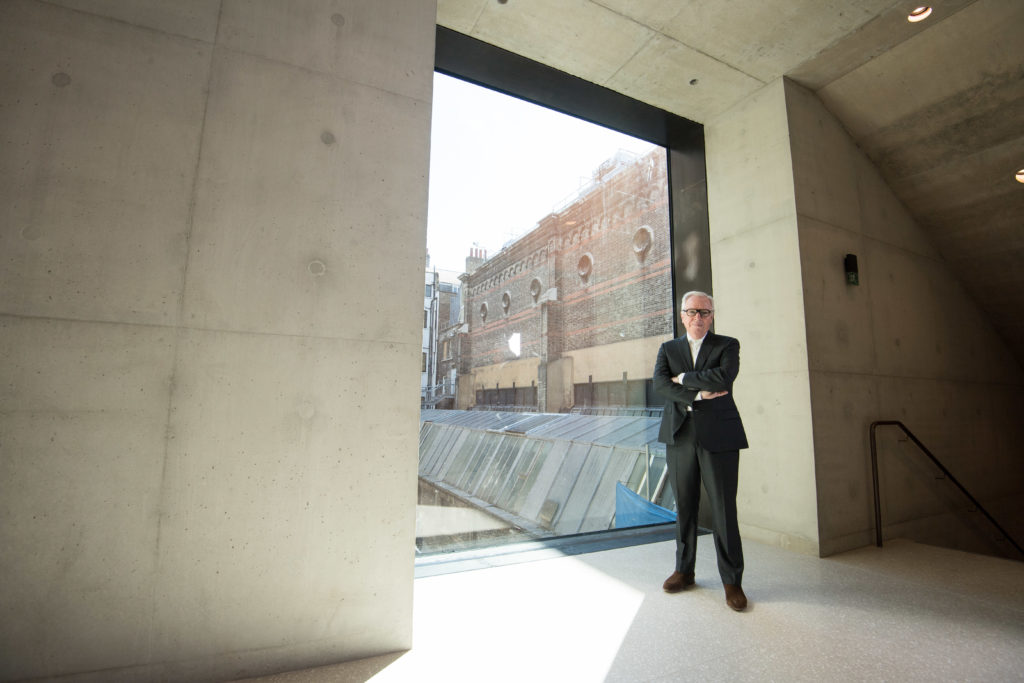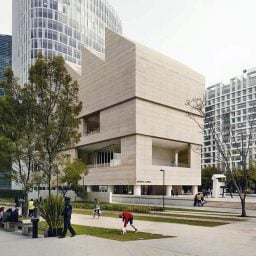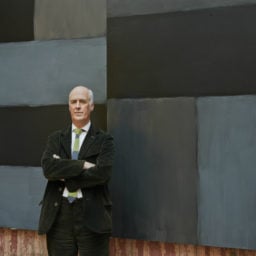Shortly after Charles Saumarez Smith became the secretary and chief executive of the Royal Academy of Arts a decade ago, he wrote a history of the august institution, which started out 250 years ago when a group of leading artists decided to seek royal patronage and turn themselves into an academy.
“It all began with a monumental row,” he wrote of the group, which emerged out of competing factions of artists vying for status. There have been many more rows, feuds, and quarrels over the years. But this week, London’s prestigious artist- and architect-run institution stands united and is in a party mood.

The Royal Academy of Art’s new Weston Bridge and the Lovelace Courtyard, copyright Simon Menges.
The reason for the festivities is the completion of a £56 million ($64 million) transformation, which has been masterplanned by one of its members, David Chipperfield RA, in its 250th anniversary year. Queen Elizabeth II officially opened the new-look RA last month and gave her approval to what the institution now calls its “campus.”
Unveiled to VIPs this week and to the public on May 19, the renovation unites its two buildings, which stand back to back in the heart of London, for the first time. The distance between them is modest, but finding a way to bridge them has taken the RA three architects and nearly two decades.
Chipperfield’s design is the third scheme put forward to upgrade and unite the institution—and it is markedly subtle. In fact, the only conspicuous piece of new architecture is a bridge that spans the narrow gap between Burlington House, which faces south onto Piccadilly, and Burlington Gardens, which faces Mayfair to the north.
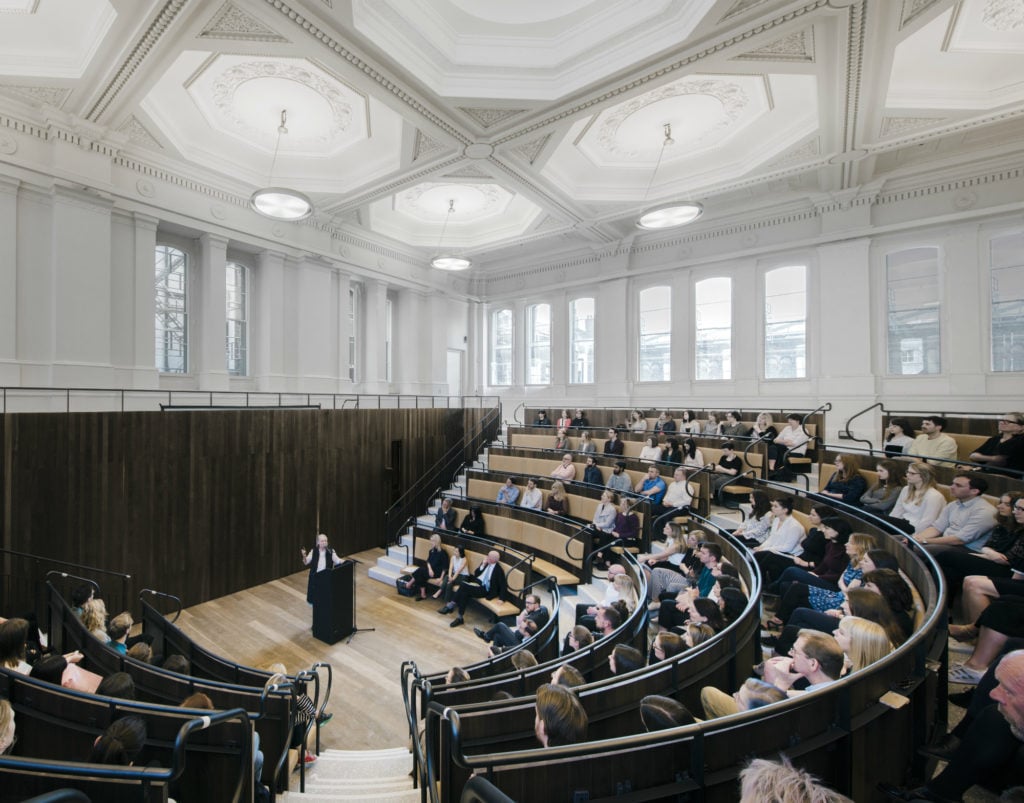
Rendering of the Royal Academy’s new Benjamin West Lecture Theatre.
But the addition was more complicated than it seems. “It was not easy,” Chipperfield tells artnet News, “because it depended on territorial negotiations and the reorganizations of emotional things.” As part of the adjustments, the school—one of Britain’s oldest art schools—had to be reconfigured, too.
“The school had a very special and exclusive and secluded haven. To take the route we wanted, we had to interrupt that sanctuary,” Chipperfield says. “It was a very three-dimensional puzzle.”
The newly expanded RA boasts 70 percent more public space and puts the school at the heart of the complex. Its students—around 50 postgraduates who are all study for free—now have their own dedicated gallery space to show off their work to the public. It is located midway in the new promenade created by Chipperfield’s clever linking of the RA’s buildings.
Inside the walls of Burlington Gardens, Chipperfield’s coup de théâtre , is the creation of a new lecture theater in what was formerly a university building in the late 19th century. The 250-seat auditorium, which is a contemporary take on a historic teaching space, is named after Benjamin West, a founding member of the RA and its second president. (West was also a “slightly cocky American painter” who, in 1768, formed the delegation to seek King George III’s seal of approval for the new academy, Saumarez Smith writes.)
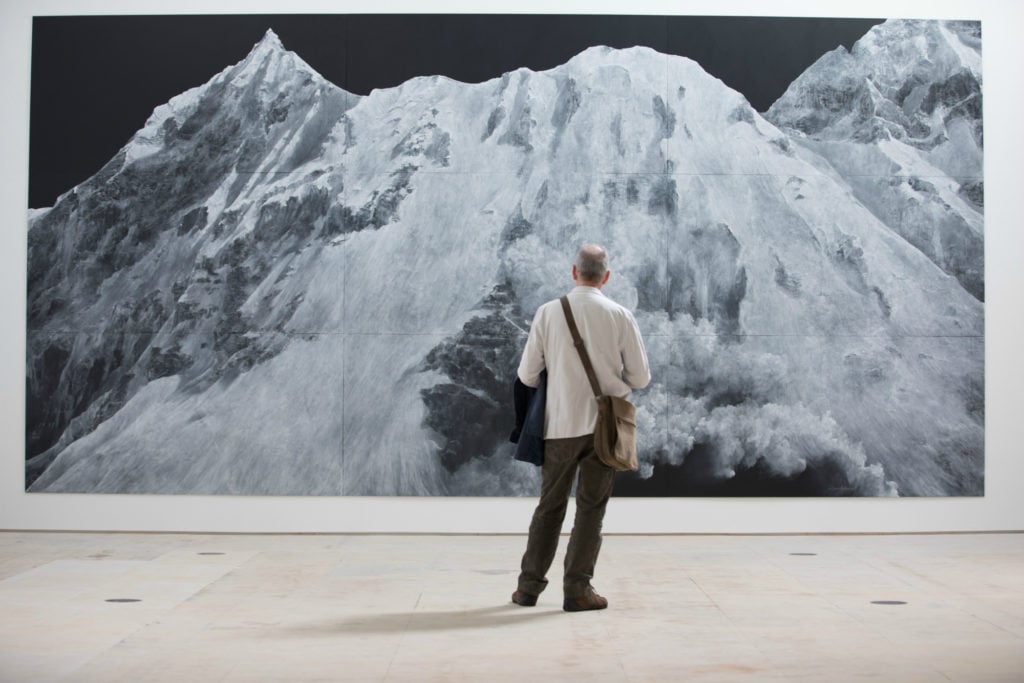
Gallery view of the Tacita Dean “Landscape” exhibition at the Royal Academy of Arts, London. Photo David Parry.
Burlington Gardens also boasts three new top-lit galleries, which will debut with an exhibition of works by Tacita Dean. Called “Landscape,” the show, which includes a major, nearly hour-long film by the artist, is the third and final exhibition in what has been a Tacita Dean season in London. (In an unusual collaboration, she has also had shows at the Portrait Gallery and the National Gallery.)
Ahead of the RA opening last week, the Los Angeles-based British artist and Royal Academician could be spotted putting the finishing touches to the hang of her large, new chalk-on-slate cloudscapes as builders nearby rushed to finish the other spaces.
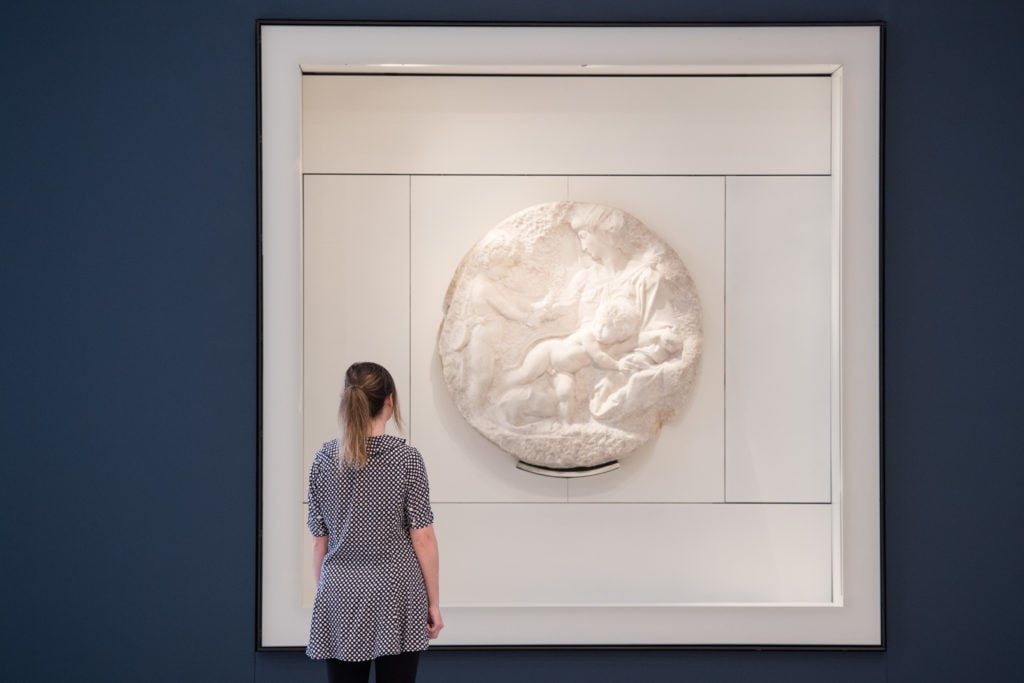
The Virgin and Child with the Infant St John by Michelangelo on show in the Collection Gallery at the press preview of the new Royal Academy of Arts at Royal Academy of Arts on May 14, 2018 in London. (Photo by Jeff Spicer/Jeff Spicer/Getty Images for Royal Academy of Arts)
Meanwhile, RA staff were busily installing works from its permanent collection across spaces newly opened up by Chipperfield’s design. Works on view range from Britain’s only marble sculpture by Michelangelo, the Taddei Tondo, to the so-called “diploma works” donated by artists when they are elected as Academicians, as well as plaster casts of statues and architectural fragments once used for teaching. Many are on view in the new collection gallery as well as an atmospheric space in the vaulted basement of Burlington House beneath its main galleries.
It is a testament to the RA’s can-do spirit—and Royal connections—that its regularly scheduled shows, including its annual Summer Exhibition, continued unabated during its three-year construction project. It also managed to organize a number of blockbuster exhibitions, culminating in the star-studded reunion of paintings once owned by Charles I, which closed last month.

Works on show in the Collection Gallery at the press preview of the new Royal Academy of Arts at Royal Academy of Arts on May 14, 2018 in London, England. (Photo by Jeff Spicer/Getty Images for Royal Academy of Arts.)
Chipperfield’s redesign will allow the RA to present 10 temporary exhibitions a year—some free to the public—and enable many more people to attend its talks by leading artists and architects, including its illustrious Honorary Academicians, such as Marina Abramović and Renzo Piano. She is preparing for a big solo show in 2020 in the RA’s main galleries while the Italian architect’s is in the fall following Dean’s in Burlington Gardens.
Chipperfield says that unlike other major cultural projects, where he sometimes feels pressure from trustees or politicians to deliver “a big punch,” his fellow Academicians are a “more subtle bunch.” If you have good ideas they will listen, he says. But “if you don’t, they will smell it.”
The architect calls his additions a series of modest interventions. Small changes, such as moving the toilets, adding top-lighting to galleries, replacing the wooden floors with terrazzo and building the bridge can add up to a big idea. The difference here? “Normally,” he says, “big ideas are sold with big ideas.”
Tacita Dean’s “Landscape,” runs at the Royal Academy in London from May 19 through August 12. The 250th Summer Exhibition runs from June 12 through August 19.
